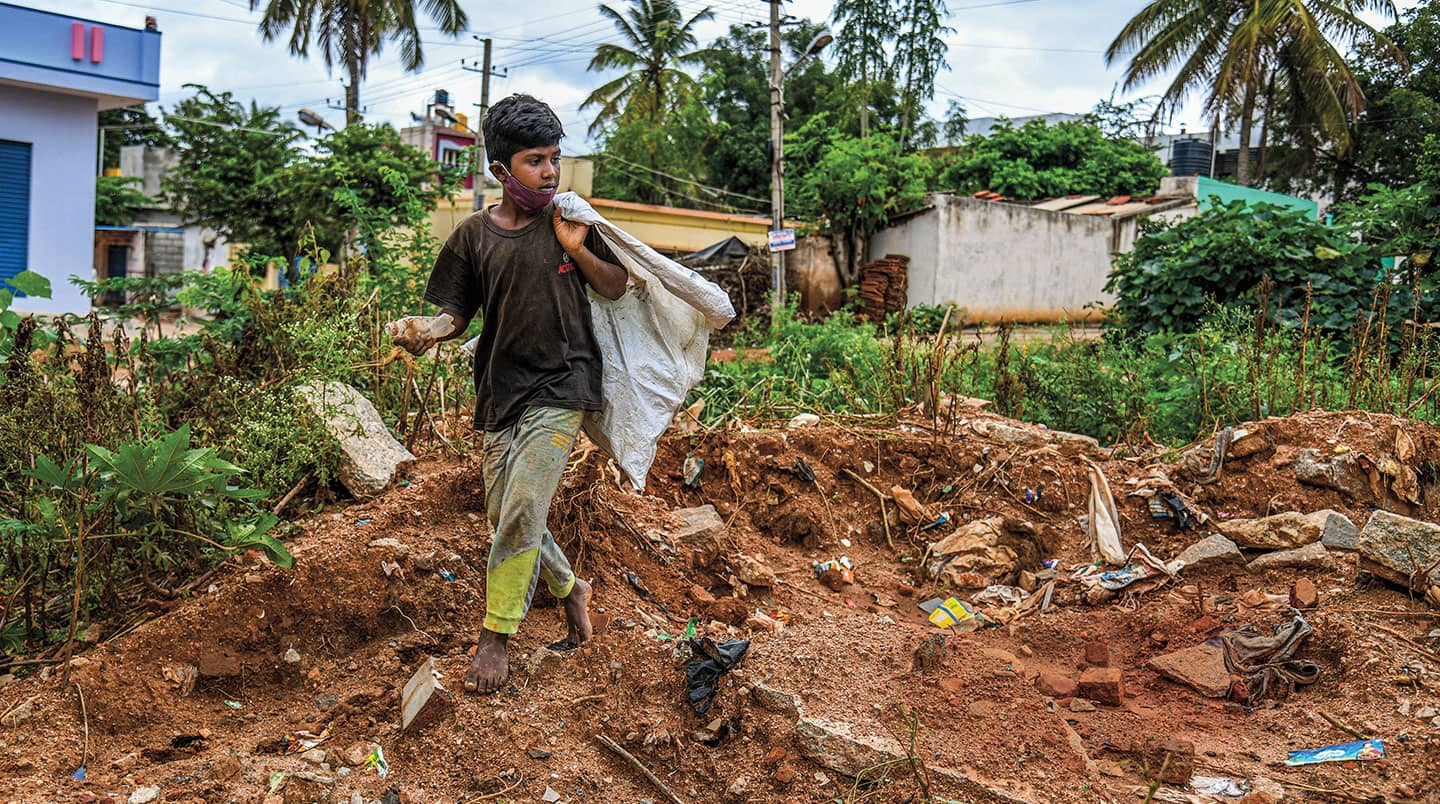Jim McMahon/Mapman®
Every morning in front of an apartment complex on the outskirts of Tumakuru, India, a swarm of children pours into the street.
The kids, ages 6 to 14, are not going to school. Instead of a backpack or books, each child carries a filthy plastic sack.
These children have been sent by their parents to search through garbage dumps littered with broken glass and pieces of concrete for recyclable plastic to sell. They earn a few cents per hour, and most wear no gloves or masks. Many cannot afford shoes and they work barefoot, with bleeding feet.
“I hate it,” says Rahul, an 11-year-old who dreams of becoming a doctor.
Every morning in front of an apartment complex, a crowd of children pours into the street. The buildings are on the outskirts of Tumakuru, India.
The kids are ages 6 to 14. They are not going to school. Instead of a backpack or books, each child carries a filthy plastic sack.
These children have been sent by their parents to search through garbage dumps. The dumps are littered with broken glass and pieces of concrete. The children search for recyclable plastic to sell. For this they earn a few cents per hour. Most wear no gloves or masks. Many cannot afford shoes, so they work barefoot, with bleeding feet.
“I hate it,” says Rahul, who is 11. He dreams of becoming a doctor.

